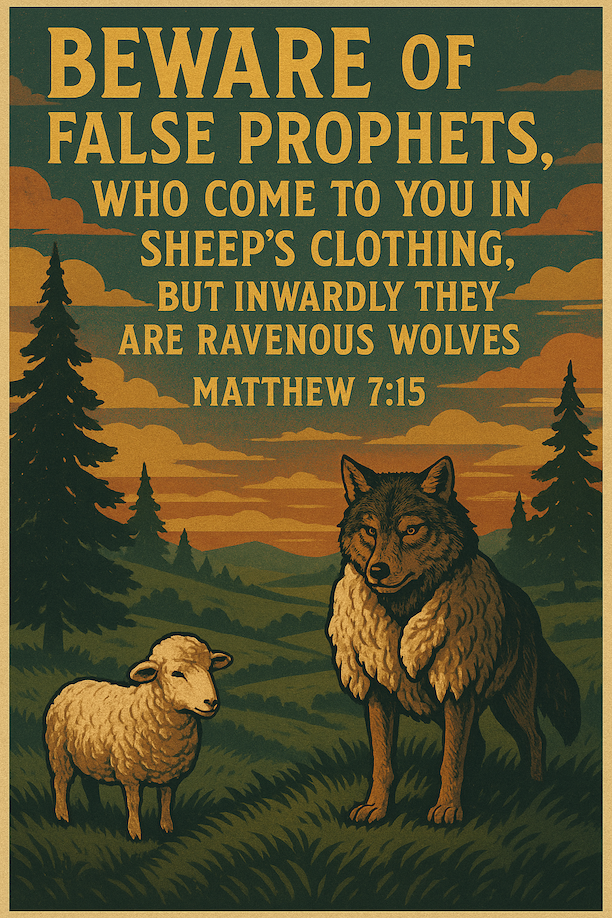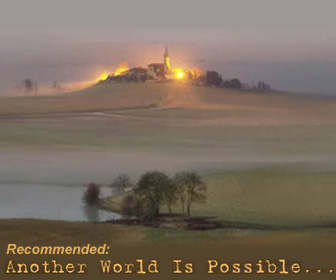| « The Google Boot | Graduating into Modernity is not for the Faint of Heart » |
The God Algorithm: How the Vatican Found Faith in the Surveillance State
Tracy Turner
The College of Cardinals elected Robert Francis Prevost on May 8, 2025, as the 267th pope of the Roman Catholic Church, a record since he was the first-born American pontiff. His election, which was international news, was not only significant to the Church's American constituents but also as a notable event to the world religious scene, which continues to evolve in an era increasingly characterized by technology and surveillance. Prevost's election is more than a national milestone; it is the latest chapter in the Vatican's complex history with power, technology, and global politics. The first pope born in the United States was elected, which shows the growing influence of the Western Hemisphere on global geopolitics and religions.
For the Vatican, an institution that is two thousand years old, the adoption of technology strategies and online platforms has been a vital element in the protection of sacred rituals and the institution's longevity. The 2025 Sistine Chapel conclave came with heightened security arrangements, a reminder of just how the conservative ethos of the Vatican had to coexist with the modern day of cyber-attacks, online rumors, and international scrutiny. Over 100 journalists and thousands of visitors were moving in on St. Peter's Square, and the conclave was fully shut off, cellular networks temporarily disconnected, and drones overhead to protect confidentiality. The worth of guarding the dignity of the papal election process, especially in modern times, remained topmost to the church as well as to its many worldwide followers (people.com).
The Catholic Church’s net worth? Heaven only knows—officially, it’s “spiritual, not fiscal.” Unofficially? Estimates range from $10B–$15B (liquid) to hundreds of billions (including art, real estate, and centuries of accumulated treasure).
Major Holdings:
- The Vatican Bank ($5.4B in assets)
- St. Peter’s Basilica (Priceless—unless Zillow appraises cathedrals)
- 177M acres of global land (bigger than France)
- Masterpieces by Michelangelo, Raphael, et al. (God’s Sotheby’s)
- Gold, jewels, and the occasional Swiss Guard (the original NFT collection)
Zinger: "The Church is the Real Victim, Here"
“The Church preaches poverty but practices portfolio diversification. If the collection plate won’t cover the bills, there’s always the Tithe-ianic’s iceberg of assets. Elon Musk tweets ‘$44B for Twitter?’ The Vatican shrugs: ‘That’s just one of our chapels.’”
Bottom Line: The world’s oldest multinational—turning loaves, fishes, and indulgences into a celestial hedge fund since 33 A.D.
Prevost's rise to power also arrives in the backdrop of frustrating questions of the role of the Church in modern politics and the evolving digital surveillance state. The Vatican has increasingly found itself under pressure to address issues of ethics in technology, the use of artificial intelligence (AI), and the emerging tide of authoritarianism globally. The questions are inevitable: Can the Church continue its moral leadership in an algorithmic ruling, surveillance technology-saturated world of diminishing civil liberties? How does the Vatican fit in with AI as it becomes increasingly established in secular states, but now also religious belief systems, social discipline, and even divine meaning?
Vatican's Technological Evolution: Balancing Tradition and Modernity
As the Vatican enters a new era when the intersection of AI and surveillance technology seems unavoidable, it is faced with an existential challenge: How do the centuries-old tradition and institution find a way through the crossroads of religion and digital innovation? Vatican has always been a player in the international geopolitics, but in the present times, its role is also expanding to the realm of digital diplomacy and techno-ethics. The 2025 conclave was not just a practice in electing a new pope, but also in immunizing the Vatican's activities against the prying eyes of the worldwide surveillance system.
In this new digital age, the Vatican has proceeded with caution to balance its deeply entrenched religious traditions with the pressing demands of the new era. For example, the Vatican has spent lavishly on protecting its technological foundation, using advanced methods such as the deployment of signal-blocking tiles and high-tech drones for monitoring during the conclave to prevent any leakage of information. These technical measures are part of a broader trend in which the Vatican increasingly employed digital safeguards to protect its security (reuters.com). In essence, the Vatican's digitalization is both a necessity and a challenge; it must modernize its security and operations while maintaining its identity as a beacon of tradition, sanctuary, and moral authority in an ever-more volatile world.
Beyond its internal security measures, the Vatican has also been at the forefront of ethical discussions surrounding the integration of AI. In 2020, it spearheaded the Rome Call for AI Ethics, which outlined critical principles for AI development, emphasizing inclusivity, transparency, and accountability. This initiative was not merely symbolic. The Vatican has recognized the potential dangers posed by AI, including the erosion of privacy, social inequality, and exploitation of vulnerable populations (theverge.com).
By 2025, the Vatican had gone further, introducing its first official decree regulating the use of AI technologies within the Holy See. This regulation places a heavy emphasis on preventing discriminatory AI practices, such as algorithmic bias, while also establishing an advisory commission responsible for monitoring AI's implementation across Vatican operations (catholicnewsagency.com). The decree is a clear indication that the Vatican, despite its historical status as a religious institution, has recognized its growing role as a global actor in the regulation of new technologies, working to align modern digital developments with its ethical frameworks and humanistic concerns.
Historical Entanglements: The Vatican, CIA, and Mossad
To fully understand the Vatican's current position in relation to global surveillance and technology, one must look at its historical entanglements with powerful intelligence agencies. Throughout the Cold War, the Vatican's role as a spiritual leader intersected with its involvement in geopolitical intelligence networks. This was not simply a matter of clerical intervention; the Vatican actively sought to counter the influence of communism, forming alliances with the CIA and MI6. During this time, the Vatican's "Holy Alliance" was born—a shadowy collaboration that intertwined religious doctrine with the strategic goals of Western intelligence services (thesun.co.uk).
The Vatican’s historical involvement in espionage is also rooted in its support for anti-communist movements, particularly in Eastern Europe. The Vatican played a pivotal role in the overthrow of Soviet influence in Poland, with Pope John Paul II acting as an influential figure in the anti-Soviet resistance, often in close coordination with the CIA. The Catholic Church’s clandestine collaboration with intelligence agencies was a major force behind the destabilization of Soviet power, laying the groundwork for a geopolitical shift that eventually led to the end of the Cold War.
More recently, the Vatican's intelligence connections have shifted towards Israel’s Mossad, reflecting its need to protect its interests and deepen its involvement in the geopolitics of the Middle East. Though the Vatican and Israel have often found themselves on opposite sides of religious divides, their shared interests in intelligence operations, technology, and regional security have drawn them closer together. This complex relationship raises important questions about the Vatican's ability to maintain its moral authority as it interacts with global intelligence agencies that are often associated with the darker sides of statecraft, such as surveillance, military intervention, and regime change (spyscape.com). The Catholic Church burns a candle from both ends, claiming Morally Superior High Ground while in bed with The Mossad, Unit 8200, Unit 9900 and the U.S. CIA.
Navigating the Digital Age: Ethical Considerations and Future Directions
As the Vatican becomes more deeply entwined with global surveillance and technological systems, the ethical implications of these engagements grow ever more pressing. The Church has long been seen as a moral compass, providing spiritual guidance and ethical frameworks to its global followers. Yet as the Vatican's relationship with tech giants such as IBM, Microsoft, and Palantir deepens, it risks becoming complicit in the very digital surveillance infrastructure that it has historically critiqued.
These tech giants are at the forefront of developing the kind of AI-driven surveillance systems that have already begun reshaping global society. From facial recognition systems deployed by law enforcement to data collection by global tech firms, these technologies often raise concerns about privacy, autonomy, and the loss of individual rights. The Vatican's involvement with these companies, through various projects and alliances, places it at the heart of a larger debate about the ethical use of surveillance technologies. Critics argue that the Church risks losing its moral credibility if it fails to challenge these corporate behemoths that contribute to the digital surveillance state (
What the Church calls evangelism, history calls ethnic cleansing. No Redemption: The Catholic Church’s Pedophilic Pandemic A holy institution built atop centuries of child rape. From Boston to Buenos Aires, altar boys became prey—groomed, violated, silenced. The pattern is ecclesiastical: molest, transfer, repeat. When exposed, the Vatican’s response has been insultingly rote: “We are sorry.” Sorry as strategy. Sorry as smokescreen. Behind every mitered apology lies a filing cabinet of sealed settlements and relocated predators. Centuries of child rape. Centuries of “I’m sorry.” Catholic Cruelty: Eternal Damnation for Birth Control and Bodily Autonomy The Vatican’s war on reproductive autonomy isn’t policy—it’s spiritual terrorism. A man with a vasectomy is marked as defiant. A woman with an IUD is a heretic. A girl who takes the morning-after pill after rape is told she has courted damnation. The Church, draped in silk and incense, damns them not just socially but eternally. No nuance. No mercy. Only theocratic mind games spun from pulpits with the weight of divine judgment. Vasectomy: A One-Way Ticket to Hell, According to Rome A snip of freedom becomes an excommunication. No violence, no malice—just a decision not to reproduce. For this, the Church promises flames. Eternal estrangement from God for a personal medical choice. Meanwhile, celibate bishops—who reproduce nothing but scandal—decree moral law from behind marble altars and velvet curtains. Reproductive autonomy for men: a mortal sin. Child rape by priests: a clerical error. The Pill: Satan in a Capsule To the Vatican, the birth control pill is not medicine—it is sin, sugar-coated. A girl trying to control her cycle is branded a slut. A married woman seeking to space pregnancies is accused of playing God. The Church would rather she birth herself to death than take a 21-day packet of progesterone. Dignity, health, economics—none outweigh the cosmic tantrum of a 2,000-year-old bureaucracy. Abortion: Branded for Life, Condemned for Eternity A woman, raped. She aborts. She is damned. Not helped. Not healed. Damned. That’s the Catholic calculus: a blastocyst is sacred; a living, breathing woman is expendable. She’s shunned from communion, stripped of grace, and sentenced to eternal shame by men in cassocks who have never known childbirth, trauma, or survival. No context, no compassion—just dogma carved in cruelty. The Church's Psychological Warfare: Guilt as a Sacrament This is not religion. It is manipulation. The Church weaponizes guilt like a sacrament—administered weekly, absorbed deeply, and designed to last a lifetime. Confession becomes surveillance. Absolution becomes bribery. Catholics are taught not to think, but to obey—and suffer in silence. Women’s bodies are battlegrounds; men’s autonomy, collateral. The goal isn’t salvation. It’s submission. And when all else fails, the Church offers its favorite drug: The Catholic Church shines a light on itself as a moral beacon, whilst bedding with the Mossad and the Lavender AI Talpiot Killing Machine – which makes Gaza and West Bank just more Catholic Collateral Damage. A Church in the Eye of the Algorithmic Storm As the digital tide rises and the lines between salvation and surveillance continue to blur, the Vatican stands at an inflection point—no longer merely the custodian of spiritual truths, but now an active negotiator within the secular priesthood of data scientists, technocrats, and intelligence agencies. Pope Robert Francis Prevost’s ascendancy is not only a personal milestone but a cipher—signaling a Vatican recalibrating its ancient moral compass to navigate a terrain littered with biometric checkpoints, predictive algorithms, and panoptic corporate dominions. The Church’s historical pattern of entanglements—from the CIA to Mossad, from Cold War backchannels to drone-guarded conclaves—now finds fresh soil in its partnerships with IBM, Palantir, and Microsoft. And yet, therein lies the Vatican’s paradox: it preaches against the commodification of the soul while outsourcing its digital sanctuary to entities that monetize attention, metadata, and spiritual influence. It cautions against technocracy even as it dances with its apostles. The Rome Call for AI Ethics, though noble in prose, must do more than echo piety—it must dare to confront the giants it now walks beside. The Church’s proclamations about human dignity will ring hollow if its servers are hosted by the very architects of algorithmic oppression. A drone-free conclave means little if the catechism itself is uploaded, indexed, and reinterpreted by machine learning systems trained in the moral void of Silicon Valley. Pope Prevost must therefore steer the Church not merely through a theological evolution, but a metaphysical insurgency against the digitization of the divine. For if God sees all, but Google sees more—then the confessional may soon be replaced by the cloud, the priest by the prompt, and the sacrament by the surveillance node. The Vatican’s survival will depend not on how well it adapts to technology, but how fiercely it defends the last embers of the human soul against a machine that knows everything—but understands nothing. Will it be shepherd or silicon partner? Guardian of the sacred, or chaplain to the cybernetic Leviathan? The answer will echo not just through the marble halls of St. Peter’s, but through the firewalls and fiber optic veins of a civilization praying for meaning in a world where even faith is now scanned, sorted, and sold. The God Algorithm: How the Vatican Found Faith in the Surveillance State References · Catholic Answers. (n.d.). Birth control. Catholic.com. https://www.catholic.com/tract/birth-control · Code of Canon Law. (1983). Book VI: Sanctions in the Church (Can. 1364–1399). Libreria Editrice Vaticana. https://www.vatican.va/archive/cod-iuris-canonici/eng/documents/cic_lib6-cann1364-1399_en.html · Human Life International. (n.d.). Abortion and excommunication. https://www.hli.org/resources/abortion-and-excommunication · National Catholic Register. (2023, August 23). Catholic teaching on vasectomies. https://www.ncregister.com/cna/cna-20240823-catholic-teaching-on-vasectomies · Pope Paul VI. (1968). Humanae vitae [Encyclical on the regulation of birth]. The Holy See. https://www.vatican.va/content/paul-vi/en/encyclicals/documents/hf_p-vi_enc_25071968_humanae-vitae.html · The Guardian. (2015, September 1). Pope Francis tells priests to pardon women who have had abortions. https://www.theguardian.com/world/2015/sep/01/pope-francis-tells-priests-to-pardon-women-who-have-abortions · PBS. (2005). The Catholic Church and birth control: American experience – The pill. https://www.pbs.org/wgbh/americanexperience/features/pill-catholic-church-and-birth-control/ · Wikipedia contributors. (2024, May 8). Canon 1397 §2. Wikipedia. https://en.wikipedia.org/wiki/Canon_1397_%C2%A72 · Catholics for Choice. (n.d.). Contraception. https://www.catholicsforchoice.org/issues/contraception/ BM and Cisco: Vatican's Rome Call for AI Ethics ###
The confessional became the crime scene.
"I'm sorry."
Winfield, N. (2023, January 10). IBM, Cisco join Vatican’s ethics pledge on artificial intelligence. Associated Press. https://apnews.com/article/79b279570b2e7a2d945c452852a19657
Palantir and IBM: Strategic AI Partnership
Wikipedia contributors. (2024, April 27). Palantir Technologies. Wikipedia. https://en.wikipedia.org/wiki/Palantir_Technologies
IBM’s Role in the Partnership on AI
Wikipedia contributors. (2023, November 14). Partnership on AI. Wikipedia. https://en.wikipedia.org/wiki/Partnership_on_AI
© 2025 Tracy Turner




